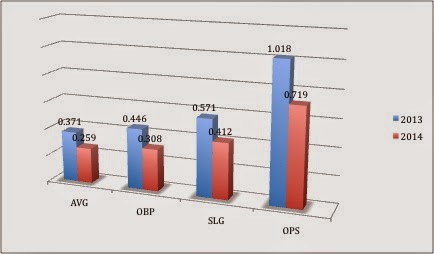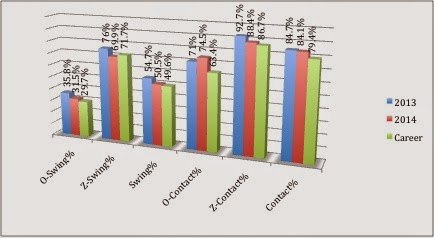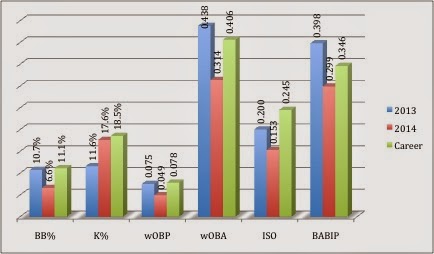The Curious Case of Miguel Cabrera
I want to start off by saying I’m not here to solve why Cabrera is off to such a slow start since personally I think he’s suffering from the same abdominal injury that he has had in the past. Now that we have that settled lets look at the numbers and see the differences between the first month of the season last year and this year.
Slash Line:
We can see a pretty large difference between last year’s numbers and this year’s numbers, which I’m sure no one here is shocked to see. The only thing that’s actually shocking about these numbers is just how shockingly average they are considering who’s they are. These are the counting stats and really do have limited “telling” value but it is something to consider. Each one of these stats has limited value in telling the future of a player since they can switch quickly and sometimes the player doesn’t have much control over them. Lets look at something that he does have control over.
Swing Rate:
For those who don’t know what these are these are called the Plate Discipline stats on Fangraphs.com. O-Swing% and O-Contact% are the percent of time a player swings outside the zone while Z-Swing% and Z-Contact% are the percent in the zone. Swing and Contact percent should be pretty obvious. So seeing the data what can we tell? Well he is swinging less in the zone than this year, represented by the red bar, as well as outside the zone. But its more balanced since he is still swinging about the same as his career numbers, represented by the green bar. Cabrera is swinging about career levels and making normal levels of contact.
Saber stats:
Batted Balls:
Hot/Cold chart:
.250 .500 .400
.111 .444 .313
.833 .143 .167
This is the current Hot/Cold zone on Cabrera for 2014. We can see that he seems to be having a bit of trouble turning on the ball up and in and just in side more towards the center of the plate. He seems to have having a problem reaching to the outer bottom of the plate. Comparing this to his Hot/Cold chart from last year where he only had issues getting to the up and center portion of the plate and down and away this is a big difference.
So as I stated earlier we aren’t going to solve the issue of Cabrera in this article but we did learn and see a lot of things that can give hints. Lack of patience might mean he’s cheating on fastballs trying to get ahead of them. Maybe he’s trying to guess the pitches before he normally would see what pitch is coming. All of these are just theories of course but the numbers do support it.



No comments:
Post a Comment